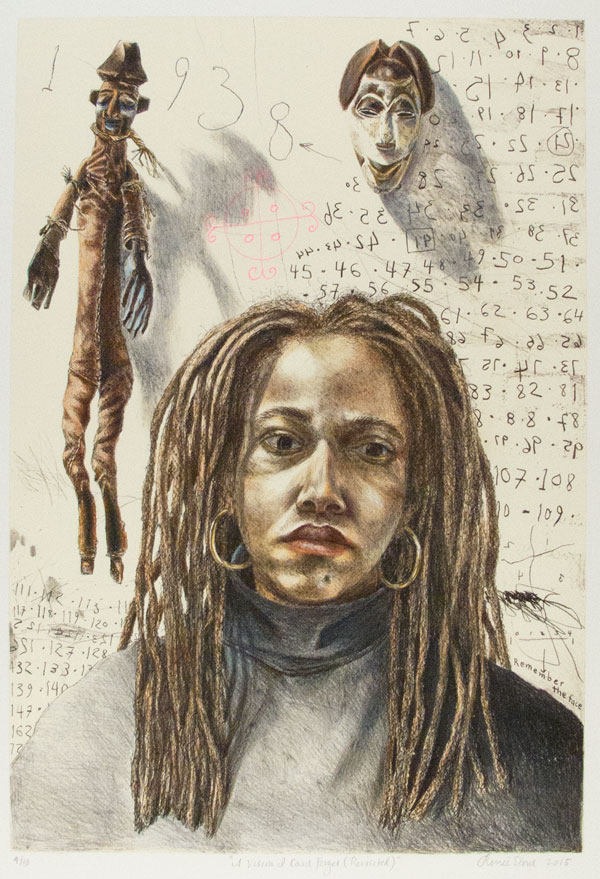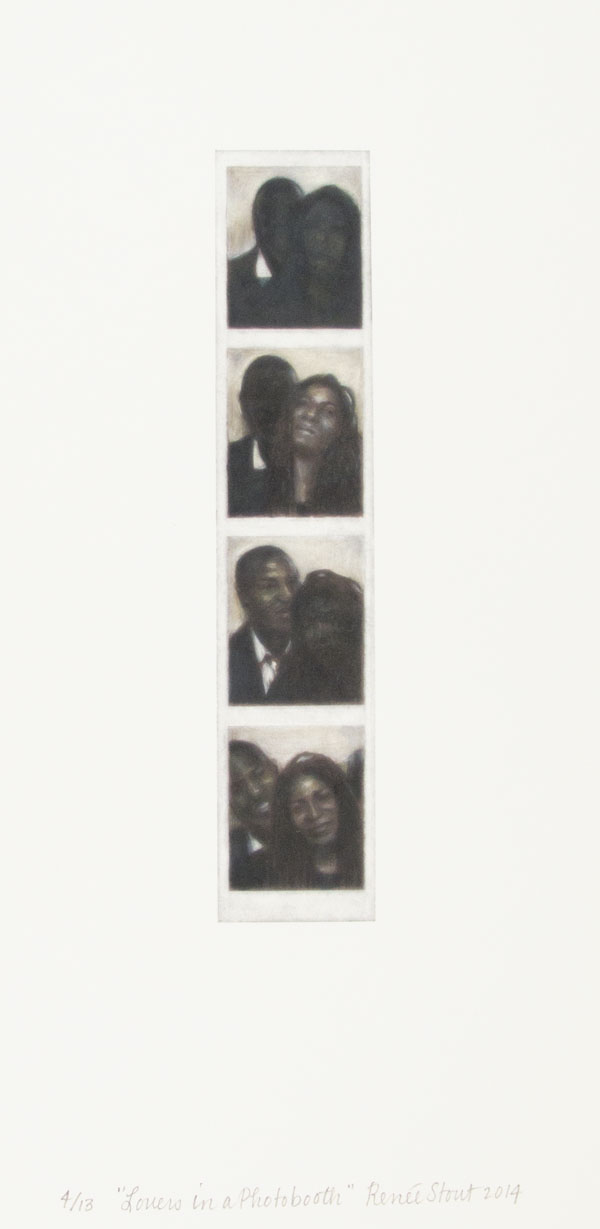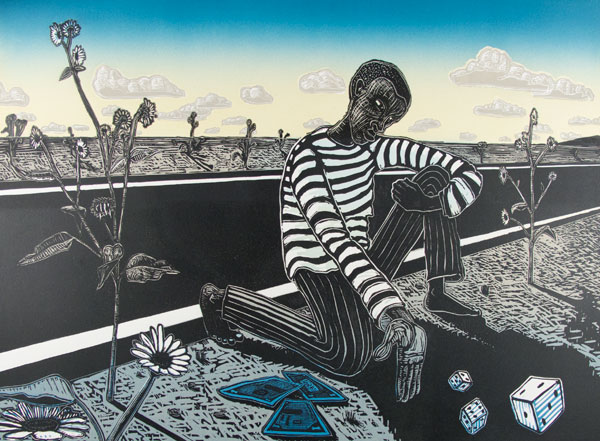SUBJECT AS ARTIST – Complete Control
What obligations does an artist have when they themselves or the community they represent is the subject?

Renee Stout, A Vision I Can't Forget (Revisited), 2015, Archival pigment Print with addition by artist in colored pencil; Gift of Chris Brink, 2020.
Dreams or nightmares? Stout’s self-portrait blurs the lines between the two, as she takes the chance to present a vulnerable image of a Black woman. Rather than produce another tribute to #BlackGirlMagic, this artist made the choice to “keep it real.” For a Black artist, there must be a great deal of temptation to present a general audience, one including white folks, with inspiring and honorable imagery. To do one’s part for the cause. Instead, without filtering away the sadness or masking grief with a smile, she invites us to sit with her in her struggles. The figures behind seem to be haunting her; they nudge us to consider the influence of the African diaspora and the slave trade on who this woman is – and who she can be. The numbers scratched into the background compete to tell us something. The past is with us, and it is enormous. But she is here – the product of every step of that past. As artist and subject, Stout is in complete control. What is she saying? Is she struggling with what she sees in herself? Or in us?

Renee Stout, Lovers in a Photobooth, 2014, Archival pigment print; Gift of Joe Zanatta, 2018.
Black love, so rarely represented where white folks can see it, is here captured intimately. Photo booth images are the ultimate opportunity to produce a memento, a personal keepsake, that most often no one else will see. The ultimate control of one's own image, in this case shared with a partner. Unfortunately, a mugshot of a Black person is more common in mainstream media than evidence of romance. If interracial understanding requires empathy, but black love is invisible to the white eye, where will the concepts of our common humanity find fertile ground?

Karsten Creightney, Roadside Gambler, 2013, Color linocut form three blocks; Gift of Joe Zanatta, 2018.
The striking contrasts of black and white make the abrupt interruptions by blue and yellow hues more vibrant, creating a sense of movement in the image. We can imagine the moment before, when the man blew on the dice before casting them onto the concrete. Creightney’s self-portrait might remind us of the universal gamble that we all make in the pursuit of our dreams. More of a gamble for some. The image, however, of a Black man “shooting craps” with cash at his feet likely gives the viewer pause. But, to what extent must an artist of color sacrifice their message in order to thwart the implicit associations of people of color with the vices of the world? Artist and subject are one and the same person, complete control. What influence, though, does the viewer have? Will the artist confirm our beliefs or challenge them?
-
Tuesday - Friday
10:00AM - 5:00PMSaturday
1:00PM - 5:00PM